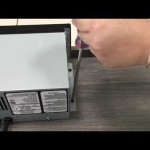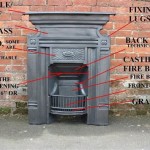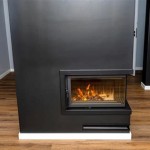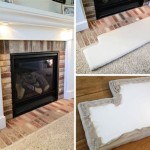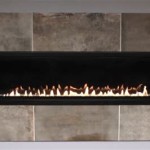How To Convert A Wood Fireplace to Gas Logs
Converting a traditional wood-burning fireplace to utilize gas logs offers several benefits, including increased convenience, reduced maintenance, and cleaner burning. This conversion process involves several steps, from assessing the existing fireplace to installing the gas log set and ensuring safe operation. This article provides a comprehensive guide on how to convert a wood fireplace to gas logs.
The conversion process, while often manageable for a homeowner with moderate DIY experience, requires adherence to safety protocols and a thorough understanding of gas appliance installation. Consulting with a qualified gas technician or licensed professional is always recommended, especially when dealing with gas line connections and ensuring proper ventilation.
Preparing the Fireplace for Conversion
The first step involves a thorough inspection and preparation of the existing wood-burning fireplace. This preparation is crucial for ensuring the safe and efficient operation of the gas logs and involves several key tasks.
Begin by thoroughly cleaning the fireplace. Remove all ash, soot, and debris accumulated from previous wood fires. A shop vacuum is useful for this task. Ensure the firebox is free of any remaining flammable materials. Any lingering combustible materials can pose a fire hazard when the gas logs are in operation.
Next, inspect the chimney and flue. Creosote buildup from wood burning can be a significant fire hazard, particularly with gas logs, as they generate different combustion byproducts. Consider hiring a professional chimney sweep to inspect and clean the chimney. A clean chimney ensures proper ventilation and reduces the risk of chimney fires. If the chimney is damaged or deteriorated, repairs may be necessary before proceeding with the conversion.
Evaluate the condition of the firebox. Check for any cracks or damage to the firebrick lining. Firebrick protects the surrounding structure from the intense heat generated by the fire. If any cracks or damage are present, repair or replace the firebrick to maintain the integrity of the firebox. Minor cracks can often be patched with refractory cement, while more significant damage may require replacing the entire brick.
Measure the dimensions of the firebox. This is critical for selecting the appropriately sized gas log set. Measure the width, depth, and height of the firebox to ensure the gas logs will fit comfortably and allow for proper airflow. Consult the manufacturer's specifications for the gas log set to determine the minimum firebox size requirements. Choosing the correct size is essential for both safety and aesthetics.
Determine the type of gas connection available: natural gas or propane. Gas logs are typically designed for use with either natural gas or propane, and it's essential to choose a log set that is compatible with the available gas supply. If a gas line is not already present near the fireplace, a qualified gas technician will need to install one. This involves running a gas line from the main gas supply to the fireplace location, ensuring proper connections and safety measures are implemented.
Consider the venting requirements. There are two primary types of gas logs: vented and ventless. Vented gas logs require the fireplace damper to remain open during operation to allow for proper ventilation of combustion byproducts. Ventless gas logs, on the other hand, are designed to burn more cleanly and do not require the damper to be open. However, ventless gas logs are subject to specific regulations and may not be permitted in all areas. Research local building codes and regulations regarding ventless gas logs before making a purchase.
Installing the Gas Log Set
After preparing the fireplace and selecting the appropriate gas log set, the next step involves the actual installation process. This requires careful attention to detail and adherence to the manufacturer's instructions. Always consult the manufacturer's instructions before beginning the installation. These instructions provide specific guidance for the particular model of gas log set being installed.
If a gas line is not already present, have a qualified gas technician install one. This is a critical step and should only be performed by a licensed professional. The technician will run a gas line from the main gas supply to the fireplace location, ensuring proper connections and safety measures are implemented. A shut-off valve should be installed near the fireplace for easy access and safety.
Install the gas line connection. Once the gas line is in place, connect it to the gas log set according to the manufacturer's instructions. This typically involves connecting the gas line to a control valve on the log set. Ensure all connections are tight and leak-free. Use a gas leak detector solution (soap and water mixture) to check for leaks at all connections. Apply the solution to the connections and watch for bubbles, which indicate a leak. If a leak is detected, tighten the connection or consult a gas technician.
Position the burner assembly. The burner assembly is the component that distributes the gas and creates the flame. Place the burner assembly in the firebox according to the manufacturer's instructions. Ensure it is level and properly aligned. Some burner assemblies may require specific positioning to ensure optimal flame patterns and heat distribution.
Arrange the gas logs. Carefully arrange the gas logs on top of the burner assembly, following the manufacturer's instructions. The proper arrangement of the logs is crucial for achieving a realistic flame appearance and ensuring proper combustion. The logs should be positioned in a way that allows for adequate airflow around the burner assembly. Avoid blocking the burner ports with the logs.
Connect the ignition system. Most gas log sets have an ignition system, which can be either a manual pilot light or an electronic ignition system. Connect the ignition system according to the manufacturer's instructions. For manual pilot light systems, follow the instructions for lighting the pilot light. For electronic ignition systems, ensure the system is properly connected to a power source (if required) and follow the instructions for activating the ignition.
Test the gas log set. After completing the installation, test the gas log set to ensure it is functioning properly. Turn on the gas supply and ignite the logs. Observe the flame pattern and check for any unusual noises or smells. Ensure the flames are burning evenly and consistently. If any problems are detected, consult the manufacturer's instructions or contact a qualified gas technician.
Safety Considerations and Maintenance
Safety is paramount when converting a wood fireplace to gas logs. Adhering to safety protocols and performing regular maintenance are essential for ensuring the safe and efficient operation of the gas logs and preventing potential hazards.
Install a carbon monoxide detector. Carbon monoxide is a colorless, odorless gas that can be produced by incomplete combustion. Install a carbon monoxide detector near the fireplace to provide an early warning of any carbon monoxide buildup. Test the detector regularly to ensure it is functioning properly. Replace the batteries in the detector as needed.
Ensure proper ventilation. For vented gas logs, ensure the fireplace damper remains open during operation. This allows for the proper ventilation of combustion byproducts and prevents the buildup of carbon monoxide. Never block the damper or restrict airflow. For ventless gas logs, follow the manufacturer's instructions regarding ventilation requirements, as some models may require specific ventilation measures.
Regularly inspect the gas logs and burner assembly. Check for any signs of damage, such as cracks, corrosion, or loose connections. Clean the burner assembly regularly to remove any dust or debris that may accumulate. A clean burner assembly ensures optimal flame patterns and efficient combustion. Inspect the gas line connections for leaks. Use a gas leak detector solution (soap and water mixture) to check for leaks. If a leak is detected, tighten the connection or consult a gas technician.
Schedule regular professional inspections. Have a qualified gas technician inspect the gas log set and gas line connections at least once a year. The technician can identify any potential problems and perform necessary maintenance to ensure the safe and efficient operation of the system. Professional inspections can also help identify any issues with the chimney or flue that may require attention.
Understand the manufacturer's warranty and safety information. Review the manufacturer's warranty and safety information provided with the gas log set. This information provides important details about the proper use, maintenance, and safety precautions associated with the product. Follow the manufacturer's recommendations for cleaning, maintenance, and troubleshooting.
Educate all household members. Ensure that all household members are aware of the proper operation and safety precautions associated with the gas logs. This includes knowing how to turn the gas on and off, how to light the pilot light (if applicable), and how to recognize potential hazards. Emphasize the importance of never tampering with the gas log set or gas line connections.
By following these steps and adhering to safety guidelines, homeowners can successfully convert their wood fireplace to gas logs, enjoying the convenience and benefits of gas heating while maintaining a safe and comfortable home environment. Consulting with qualified professionals throughout the conversion process is crucial for ensuring proper installation, safe operation, and compliance with local building codes and regulations.

Wood Fireplaces Gas Conversion That Counts

Can A Wood Burning Fireplace Be Converted To Gas The Flame Company

Want To Convert Gas Wood Fireplace Full Service Chimney

Wood Fireplace To Gas Logs Conversion Mad Hatter Services

Want To Convert Gas Wood Fireplace Full Service Chimney

Update Your Wood Fireplace To A Gas

How To Convert Your Wood Burning Fireplace Electric Or Gas

Wood To Gas Fireplace Conversion In Wisconsin Free Quote Badgerland Waesha

What S The Cost To Convert A Wood Fireplace Gas Orange County Register

How To Convert A Gas Fireplace Wood Burning One Vertical Chimney Care
Related Posts


